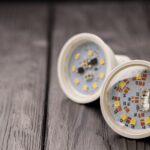Imagine slashing your electricity bill by up to 30%—not by compromising on comfort, but by harnessing cutting-edge technology. Energy monitoring systems are rapidly becoming indispensable tools for homeowners aiming to optimize their energy use, reduce costs, and embrace sustainable living. In this article, we dive deep into how you can leverage these systems to make informed and impactful decisions on your energy consumption.
- Understand how energy monitoring systems operate and why they are essential in minimizing home energy usage effectively.
- Discover the key features you should prioritize when choosing an energy monitoring system, ensuring seamless integration with other smart devices in your home.
- Learn practical strategies to harness energy monitoring data, enabling you to implement changes that lead to noticeable reductions in your electricity expenses.
By the end of this article, you’ll be equipped with the knowledge to transform your home’s energy management. Dive in to explore strategic insights into reducing your electricity bill while promoting long-term energy conservation.
Understanding Energy Monitoring Systems: How to Reduce Your Home Electricity Bill by 30%
Energy monitoring systems are a pivotal tool in the pursuit of reducing energy consumption and cutting down electricity costs in the home.
These systems work by providing homeowners with detailed insights into how energy is consumed across various appliances and devices. By installing sensors and connecting them to a central system, energy monitoring devices collect data and present it in a user-friendly format, often accessible via smartphones or computers.
The beauty of energy monitoring systems lies in their ability to inform you about your energy use in real time. This immediate feedback allows you to identify which devices are driving up your electricity bill and adjust your usage habits accordingly.
Employing an energy monitoring system not only fosters energy efficiency but also encourages sustainable living. As energy bills rise, taking control of your energy consumption becomes increasingly important. These systems empower you to make data-driven decisions that lead to significant savings.
Key Features of Energy Monitoring Systems
When selecting an energy monitoring system, certain features stand out for their ability to enhance the efficiency and convenience of managing home energy use.
Real-time Energy Usage Reports: This feature provides instant feedback on energy consumption, helping you identify patterns and peak usage times instantly.
Compatibility with Smart Home Devices: Many modern houses incorporate smart technologies. Choosing an energy monitoring system that integrates seamlessly with devices such as smart thermostats and smart plugs can streamline management and optimization.
User-friendly Interface: The ability to interpret energy data easily is crucial. A system that offers an intuitive interface makes it easier for you to adjust your usage and understand spending trends.
By focusing on these features, you can leverage technology to not only reduce utility expenses but also contribute to more environmentally friendly energy consumption.
Effective Strategies to Implement Energy Monitoring Systems: How to Reduce Your Home Electricity Bill by 30%
Energy monitoring systems are transforming how we manage our home electricity usage. To achieve a notable reduction in your electricity bill, proper implementation of these systems is crucial.
Begin by gathering data from your energy monitoring system. This data provides insights into your home’s real-time energy consumption patterns, helping you identify peak usage times and energy-intensive appliances.
Once you’ve gathered sufficient data, analyze it to understand where you can make adjustments. Here are a few tips to optimize your electricity usage:
- Identify Energy Drains: Pay attention to appliances or devices that consume the most energy and evaluate their necessity during peak hours.
- Set Goals: Based on your data analysis, set realistic energy-saving goals, such as reducing usage during high-cost periods.
- Behavioral Adjustments: Modify your daily habits, like turning off lights in unused rooms and unplugging devices when not in use, to gradually lower consumption.
Additionally, take advantage of any automation features in your energy monitoring system. Many systems can integrate with your smart home devices, allowing you to automate energy-saving practices. For instance, scheduling your thermostat or lighting can tremendously cut down unnecessary energy usage.
To ensure continued success, regularly review your energy monitoring reports. This will help you stay on track with your energy reduction objectives and adapt to any changes in your consumption patterns over time.
By diligently following these strategies, you can effectively utilize your energy monitoring system to not only achieve a 30% reduction in your home electricity bill but also contribute to broader energy conservation efforts.
Frequently Asked Questions About Energy Monitoring Systems
What is an energy monitoring system?
An energy monitoring system tracks real-time electricity usage in your home, providing insights to reduce consumption.
How can an energy monitoring system save me money?
By analyzing your energy consumption patterns, it helps identify wasteful habits, allowing you to lower usage and bills.
Are energy monitoring systems compatible with smart home devices?
Yes, many systems are designed to integrate with existing smart home devices for seamless operation.
What features should I look for?
Look for real-time usage reports, alerts, and smart device compatibility.
Can these systems help with energy efficiency?
Absolutely, they encourage efficient energy use by providing actionable insights and suggestions.





